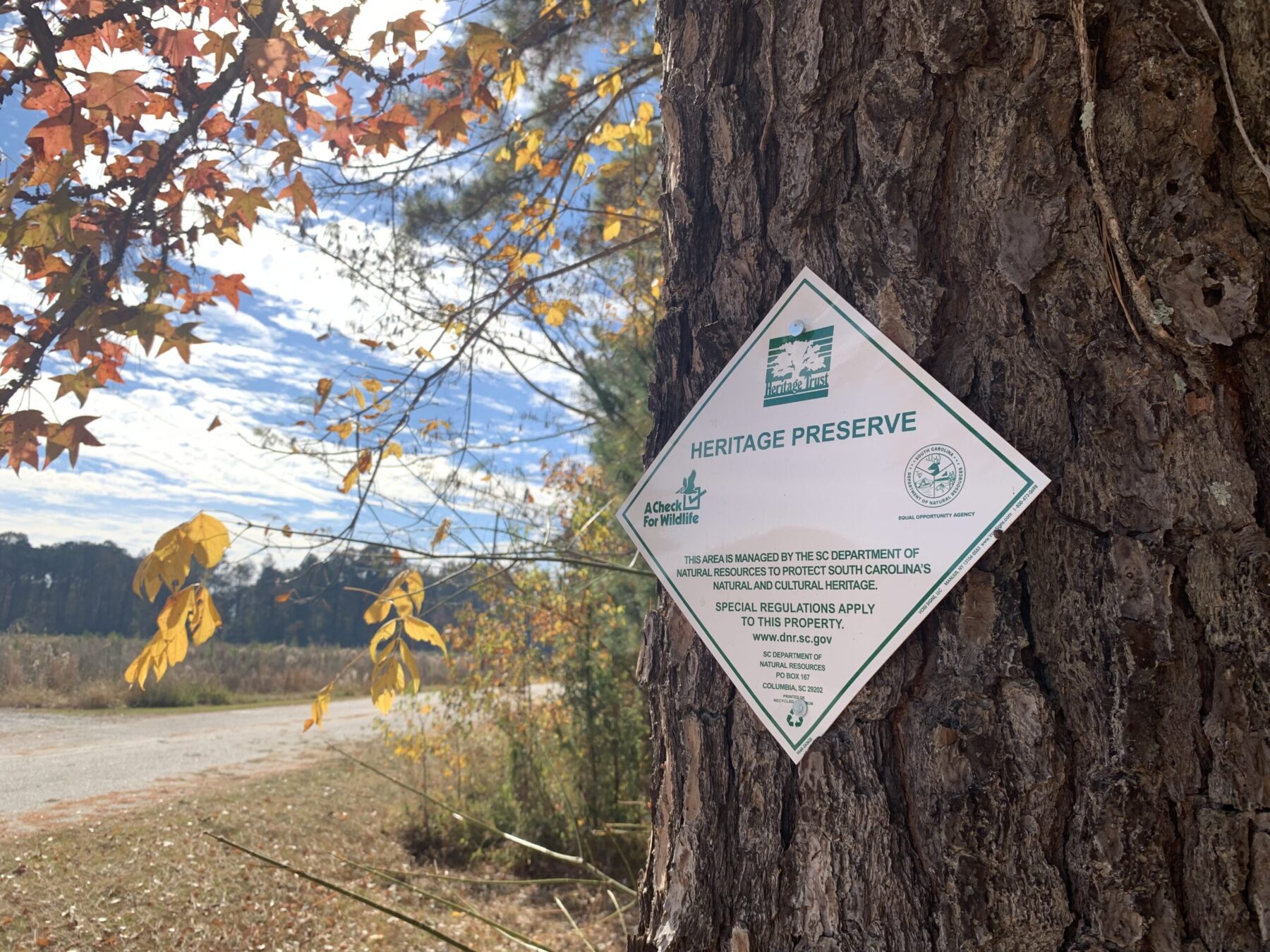
Congaree Creek Heritage Preserve in Cayce. (File/Skylar Laird/SC Daily Gazette)
COLUMBIA — South Carolina could conserve nearly 3,000 acres along the Georgia border and in the Pee Dee at a cost of roughly $8 million.
The two pieces of land, which the state Department of Natural Resources got approval to consider last month, could add onto a network of more than 70 protected heritage preserves across the state, chosen because of their cultural or natural significance.
When the state might purchase the two new properties is unclear. The committee’s approval was not to purchase the land but to start the process of examining the properties. That can include assessments, appraisals, site visits and surveys to ensure the properties are up to par.
A Department of Natural Resources spokesman declined to comment on the projects until they are further along.
Greystone property
A 260-acre property in North Augusta would help protect the largest known area of a federally endangered plant. Buying the property would cost an estimated $5 million, according to documents provided to the state’s fiscal oversight committee.
The herb, relict trillium, grows only in parts of South Carolina, Georgia and Alabama. The herb sprouts primarily underground, but visitors can spot mottled leaves and dark-colored flowers, according to the U.S. Department of Agriculture.
About 130 acres of the plant grow on the Greystone property, creating the largest and most intact of the 44 populations of the plant researchers know about, according to agency documents.
The property also has “beautiful scenery, undulating hills, mature oak-hickory forests, tranquil creeks, (and) granite outcroppings,” according to the Central Savannah River Land Trust, a nonprofit that owns the land.
Already, the preserve has more than 3 miles of hiking trails, a 2,000-square-foot pavilion and bathrooms, according to the land trust. If the agency decides to buy the property, it will open those up to the public, according to meeting documents.
Woodbury property
Another potential new preserve in Florence County could protect more than 2,500 acres of forest from development and sand mines, according to meeting documents.
The Woodbury property sits right where the Lynches and Great Pee Dee rivers meet. If purchased, the land would both become part of the 25,600-acre Woodbury Wildlife Management Area as well as a heritage preserve, allowing people to fish and hunt while also giving the natural resources agency more control over conservation, according to the department.
Largest conservation easement project in SC history underway with $50M grant
The state would buy the property from Open Space Institute, which purchased it in April, for $3.1 million, according to meeting documents. The conservation group also plans to sell the adjoining 5,000-acre Snow’s Island to the Department of Natural Resources in 2025, the group said previously.
Snow’s Island, an inland island created by the meeting of several rivers, was the site of Gen. Francis Marion’s main encampment during the Revolutionary War. Marion used the spot to launch attacks on British forces, including the Georgetown garrison down the river, according to the Open Space Institute.
The piece that state officials are considering is mostly timberland, including hardwood forests of beech and oak trees. Because the property includes swamps and marshes, protecting it could reduce flooding, the Office of Resilience said when the Open Space Institute first bought the land.
Gopher Tortoise Heritage Preserve
The agency also got the go-ahead to consider expanding its existing Aiken Gopher Tortoise Heritage Preserve. If officials agree to buy the 300 acres under consideration for $1 million, the Aiken preserve would become 2,000 acres in total.
Like its name implies, Gopher Tortoise Heritage Preserve offers habitat to the reptiles, which are in danger of going extinct in the state. The tortoises provide shelter for more than 300 other species in their burrows, which can reach up to 30 feet long, according to the Department of Natural Resources.

